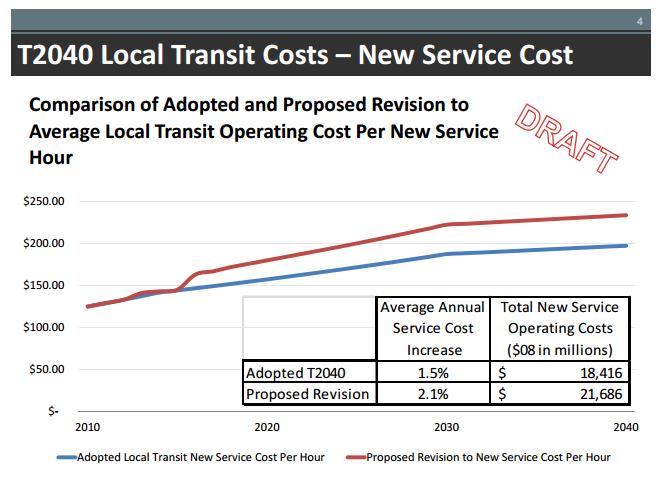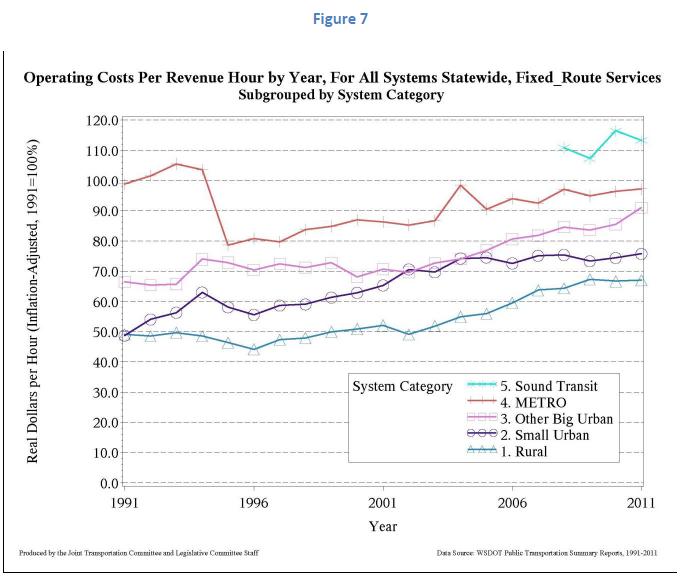![]()
by John Niles
![]()
Advocates of transit efficiency should be disturbed by the spectacular
growth forecast for Seattle area transit's future hourly cost of new
service, as recently revised and released by the Puget Sound Regional
Council (PSRC). This forecast is created by the regional transit agencies
themselves via the Transit Operators Committee of PSRC.
Transit efficiency -- more bang for the buck -- is a requirement for meeting growing transit demand while keeping the public subsidy of transit sufficiently limited to leave tax capacity to cover other vital human needs such as health, education, and public safety.
So, look at the fourth slide in "Transportation 2040 Update, Summary of Proposed Transit Cost Refinement, Transportation Operators Committee, April 18, 2013" Here's a picture:

As shown in the
excerpt, an hour of new bus service begins at $125 per hour in 2010 and by
2030 is at about $225. That's in constant dollars, so this is not a
reflection of future price inflation.
What's revealed is 3% annual growth in cost of service compounded over 20
years! Price inflation -- typically a percent or two annually -- would be on
top of that!
In the third slide, even the existing service operations cost in year-of
expenditure dollars is forecast to require a 5% annual increase, easily
twice the expected rate of price inflation.
One obvious conclusion is that transit agencies in central Puget Sound are
working with a financial model that expects to devour an ever larger share
of public resources.
Not surprisingly, the agencies now seek authorization from the State
Legislature to raise the local tax rate to try to make cost growth
sustainable by adding more subsidy dollars from the general public.
But where is innovation to improve efficiency? Is there really nothing more
that can be done to deliver new service more efficiently?
Instead, transit agencies are planning for growing inefficiency, despite
their obviously small improvement steps loudly proclaimed to divert
attention from a fundamentally flawed cost structure.
As further evidence of the cost issue, note the rising King County Metro real dollar cost growth per service hour since 1996 in the Figure 7 graphic on page 23 of the Legislative Joint Transportation Committee report of January 9, 2013, Public Transportation Fiscal Health:

In the figure just above, also note
how "Other Big Urban" transit agencies, including Pierce Transit and
Community Transit, have seen pretty steady, real dollar cost growth per hour
of service since 2002.
What we are seeing continues a disturbing tradition -- no matter how much transit revenue has grown from the cash generating engine of existing tax rates, agencies want authorization for higher rates.
What's needed for Western Washington public transit is additional reform, accountability, innovation, and cost control, rather than an expansion of taxing authority that reinforces structural or administrative inefficiency in how transit works now.
![]()
Return to the Public Interest Transportation Forum home page.
![]()
Last modified: May 14, 2013